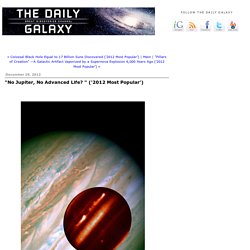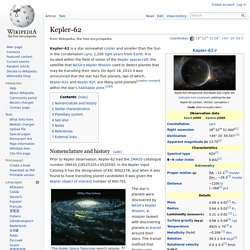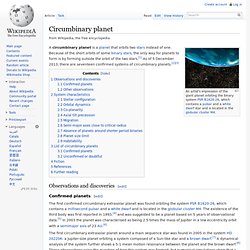

Telescope Reveals Record-Breaking Exoplanet Discovery. Probing the Mysteries of Europa, Jupiter's Cracked and Crinkled Moon. Jupiter's moon Europa is believed to possess a large salty ocean beneath its icy exterior, and that ocean, scientists say, has the potential to harbor life.

Indeed, a mission recently suggested by NASA would visit the icy moon's surface to search for compounds that might be indicative of life. But where is the best place to look? New research by Caltech graduate student Patrick Fischer; Mike Brown, the Richard and Barbara Rosenberg Professor and Professor of Planetary Astronomy; and Kevin Hand, an astrobiologist and planetary scientist at JPL, suggests that it might be within the scarred, jumbled areas that make up Europa's so-called "chaos terrain.
" A paper about the work has been accepted to The Astronomical Journal. "We have known for a long time that Europa's fresh icy surface, which is covered with cracks and ridges and transform faults, is the external signature of a vast internal salty ocean," Brown says. The OSIRIS instrument measures spectra in infrared wavelengths. "No Jupiter, No Advanced Life? " ('2012 Most Popular') Asteroids may have delivered water and organic compounds to the early Earth.

According to the theory of punctuated equilibrium, occasional asteroid impacts might accelerate the rate of biological evolution by disrupting a planet's environment to the point where species must try new adaptation strategies. The astronomers based their conclusion on an analysis of theoretical models and archival observations, including infrared data from NASA's Spitzer Space Telescope.
"Our study shows that only a tiny fraction of planetary systems observed to date seem to have giant planets in the right location to produce an asteroid belt of the appropriate size, offering the potential for life on a nearby rocky planet," said Martin, the study's lead author. "Our study suggests that our solar system may be rather special. " Is It Reaching its Peak?" (Weekend Feature) There are 200 billion stars in the Milky Way and 90% are small enough and old enough to have planets in orbit.

And only 10% of these stars were formed with enough heavy elements to have and Earths-- will orbit within their star's habitable zone. Differing from Sasselov, an important study by an international team of astronomers has established that the rate of formation of new stars in the Universe is now only 1/30th of its peak and that this decline is only set to continue. The accepted model for the evolution of the Universe predicts that stars began to form about 13.4 billion years ago, or around three hundred million years after the Big Bang. Many of these first stars are thought to have been monsters by today's standards, and were probably hundreds of times more massive than our Sun. Such beasts aged very quickly, exhausted their fuel, and exploded as supernovae within a million years or so. The Daily Galaxy via Royal Astronomical Society and Harvard CfA Image credit: David Sobral. Emerging as Prime Suspects in the Kepler Mission's Search for Life Beyond Our Solar System.
In a series of recent papers, Heller and his colleague tackled some of the big-picture problems to habitability posed Rory Barnes from the University of Washington and the NASA Astrobiology Institute by the relationship between exomoons and their host planets.

Heller and Barnes have proposed a circumplanetary "habitable edge," similar to the well-established circumstellar "habitable zone. " This zone is the temperature band around a star within which water neither boils off or freezes away on a planet's surface – not too hot, not too cold, thus earning it the nickname "the Goldilocks zone. " Kepler-62. Nomenclature and history[edit] Prior to Kepler observation, Kepler-62 had the 2MASS catalogue number 2MASS J18525105+4520595.

Cassini Captures Spectacular View Of Sunlight Glinting Off Of Titan's Seas. Scientists shocked to find cell-like structures within Martian meteorite. Electron microscope image of a mysterious oval structure in the Nakhla Mars meteorite.

Scientists have cracked open an ancient meteorite from Mars and say they have found strong evidence that suggests Mars may have had life in its distant past. The rock that crashed onto Earth over a century ago, known as the Nakhla meteorite, has been identified by previous studies as having come from the Red Planet and has been dated at 1.3 billion years old. The research team discovered that deeply embedded within the rock are what looks like egg-shaped, ’cell-like’ structures that are believed to have once held water. “In many ways it resembled a fossilized biological cell from Earth but it was intriguing because it was undoubtedly from Mars,” explained study co-author Ian Lyon, planetary researcher at the University of Manchester in a press statement.
Around. Atmosphere. Earth. Circumbinary planet. A circumbinary planet is a planet that orbits two stars instead of one.

Because of the short orbits of some binary stars, the only way for planets to form is by forming outside the orbit of the two stars.[1] As of 5 December 2013, there are seventeen confirmed systems of circumbinary planets.[2][3] Observations and discoveries[edit] Confirmed planets[edit]